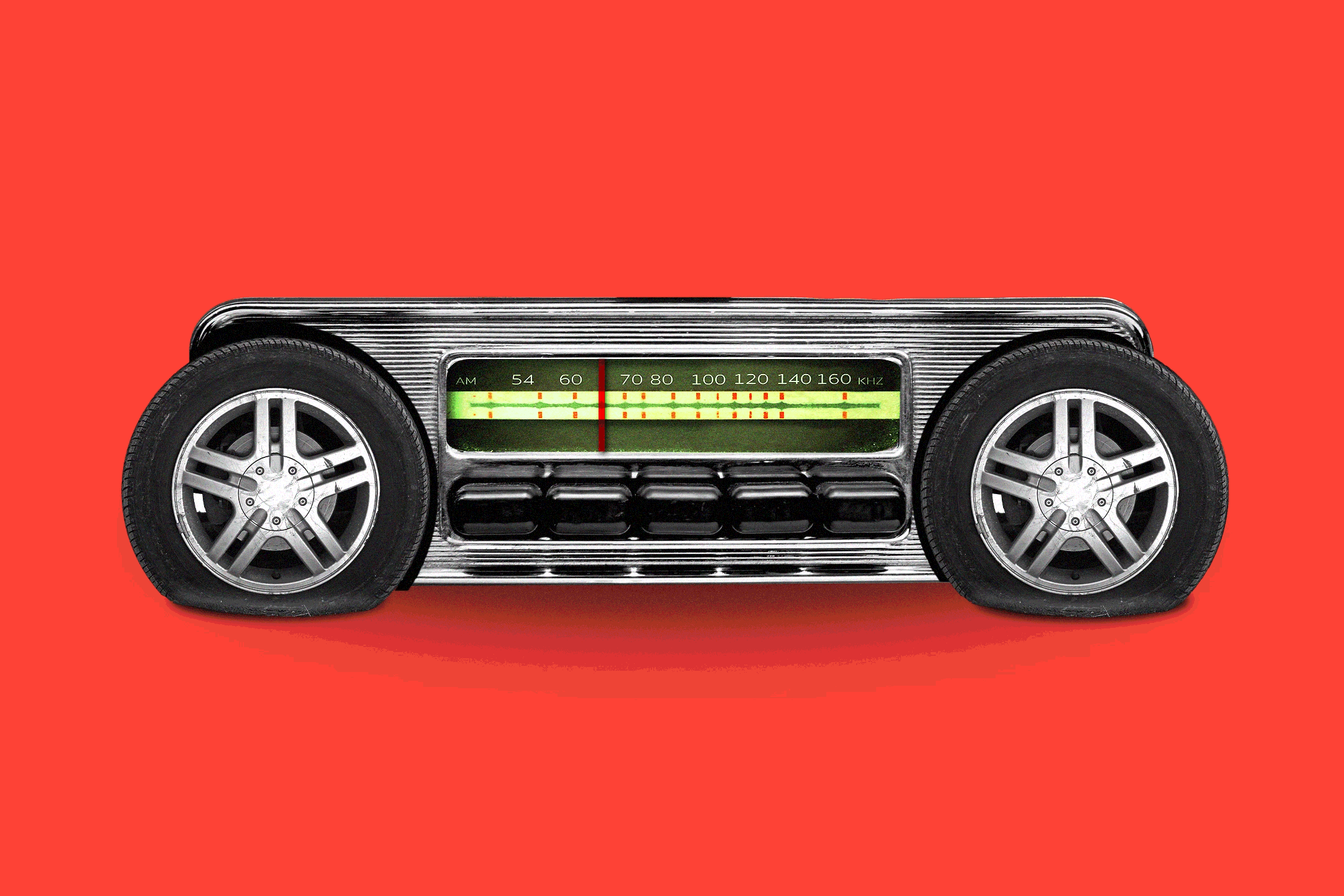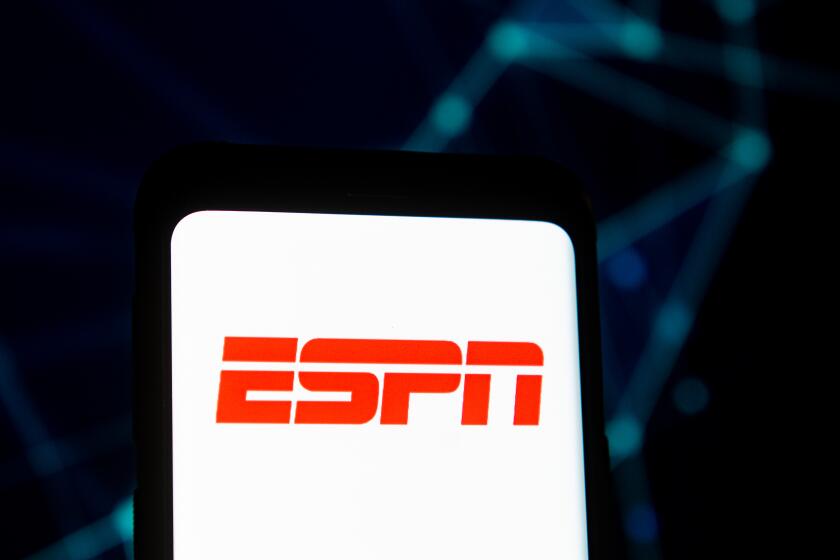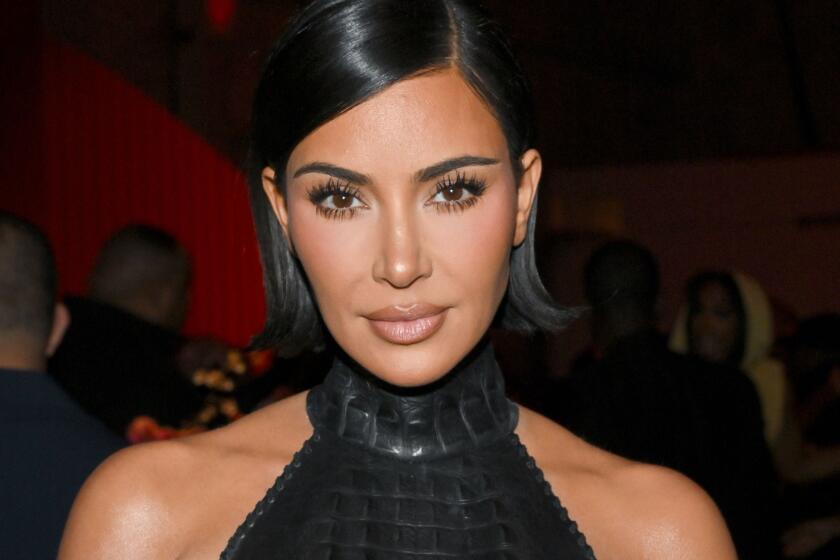Radio Tunes In Warily to Its Digital Future
- Share via
Advocates of digital broadcasting technology descended on the National Assn. of Broadcasters’ annual convention in Las Vegas Sunday, hoping the promise of higher quality and profits will persuade local stations to go digital long before their audience is ready to tune in.
This time, the target is radio broadcasters, not television stations, the majority of which have already started down the dimly lit path to digital. But though many radio executives are excited about the digital future, most are moving cautiously -- if at all.
The new technology delivers better reception, higher fidelity and more sophisticated services, such as providing traffic information on demand or letting listeners rewind to the beginning of a song. The concept is so appealing that 14 of the country’s largest radio chains have invested in the company that developed the technology, IBiquity Digital Corp. of Columbia, Md.
The first receivers that can tune in digital signals, though, won’t be sold until later this year. And there’s no telling how long it will take to develop a digital-radio audience large enough to be meaningful to advertisers and other potential sources of revenue.
That helps explain why so far, fewer than 1% of the more than 10,000 radio stations around the country have obtained the rights to use IBiquity’s technology. Only about 20 stations -- including Los Angeles’ KROQ-FM, owned by Viacom Inc.’s Infinity Broadcasting Corp. -- have turned on a digital signal.
The radio industry is in the same vexing spot the television industry has been in for six years: shifting to a new technology well ahead of consumer demand, with no clear way to recover the investment.
The consolation for radio broadcasters is that it won’t cost them nearly as much to go digital as it’s costing their TV counterparts.
“That makes it a lot more palatable,” said Entercom Communications Corp. Chief Executive David Field, chairman of the NAB’s radio board.
For TV stations, the move has been underway since 1997, when the Federal Communications Commission gave them a second channel for digital broadcasting and ordered them to start filling the channels by May 2003. Radio stations, on the other hand, are making the change voluntarily.
The technology they’re converting to squeezes the digital signal into the same frequencies that a station uses for its AM or FM broadcasts. In addition to near-CD-quality sound, the digital signal has enough capacity to deliver at least as much data as a dial-up modem, said Bob Struble, chief executive of Ibiquity. Not only does digital significantly upgrade the sound quality, particularly of AM radio, but it also sharply improves reception. There’s no static or fading with a digital signal -- it’s all or nothing.
Many stations can make the shift to digital by installing two refrigerator-size racks of equipment at their transmission towers. An engineer for a major radio chain estimated the cost at $250,000 for a typical FM station, and $60,000 to $70,000 for an AM station.
Field said Entercom, which has 101 stations in 19 markets, will spend up to $2 million a year on digital upgrades for three to five years. That’s hardly pocket change, but it’s not much compared with the chain’s annual revenue of $400 million.
The scale of the investment means that digital radio is likely to succeed, and do so faster than digital TV, said broadcasting analyst Laura Behrens of GartnerG2, a technology research firm.
Many stations are justifying the expense in defensive terms, as a way to keep their audience from switching to other, digital sources of music and information, Struble said.
“The perspective of most of these folks is that it’s a small insurance investment for the good of the industry,” he said.
The leading satellite radio service, XM, has signed up about 483,000 subscribers. That number may not threaten local radio stations today, but XM got there in only 1 1/2 years.
Over the longer term, radio broadcasters hope digital technology will produce new revenue. The capacity of digital signals makes it possible to enhance programs with related data, such as song titles and artist names. The technology also opens the door to a host of information and e-commerce services offering regional reports on road conditions, CDs or concert tickets. And if manufacturers find ways to integrate digital radios with cell phones and other devices, the extra services could become interactive, Struble noted.
Behrens said broadcasters are used to making large upfront investments in technology with no immediate promise of a return. What’s different about digital, she said, is that stations are unusually unclear about how, or whether, the technology will make them any money.
The transition to digital will take more than a decade, Struble said, largely because there’s no government pressure on radio broadcasters to cut off their current analog signals. Another factor affecting the pace of the transition, Behrens said, is the advertising market, which is mired in a prolonged slump.
If the largest station group, Clear Channel Communications Inc., decides not to convert the bulk of its more than 1,200 stations, “it would make it tougher for the rest of the industry to move forward,” she said. Clear Channel officials were not available for comment.
Record companies eye the emergence of digital radio warily because the signals aren’t scrambled, making them susceptible to being copied and redistributed freely over the Internet, said Mitch Glazier, senior vice president of government relations for the Recording Industry Assn. of America.
Gary Richardson, owner of WJLD-AM, a 1,000-watt urban station in Birmingham, Ala., has been through the new-technology drill before.
In the early 1990s, Richardson invested about $20,000 to convert his station to AM stereo, a much-hyped upgrade that never caught on with consumers. So he had second thoughts about spending $35,000 on digital technology -- calling it “a significant amount of money for a stand-alone AM station my size.”
The concerns evaporated after the equipment was installed.
“Once that digital signal was turned on and I heard it on a receiver, all doubts were removed,” Richardson said. “It is an awesome signal.”
More to Read
The biggest entertainment stories
Get our big stories about Hollywood, film, television, music, arts, culture and more right in your inbox as soon as they publish.
You may occasionally receive promotional content from the Los Angeles Times.











